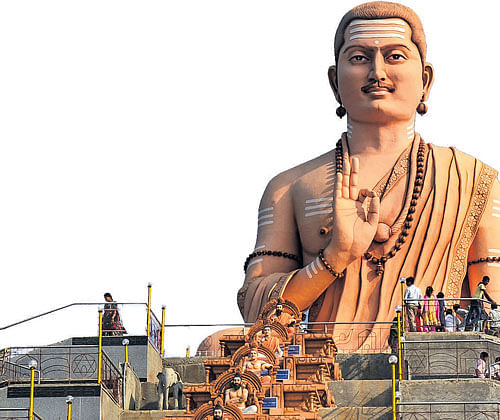
Basavakalyan, located in Bidar district, is a place of social and historical significance. In olden times, the kings of Western Chalukyas shifted their capital from Manyakheta (present Malkhed in Kalaburagi district) to here. During their successful rule in 11th and 12th centuries, they had an empire that spread over most parts of Deccan Plateau and southern India. The legacy of the rulers that stands even today is the magnificent fort towards the northern side of the town. That is as far as the history goes.
Basavakalyan also became well known with the advent of great social and religious reformer Basaveshwara, fondly known as Basavanna. Serving as the prime minister in the court of King Bijjala, he earned the wrath of the king when he began a movement to remove the caste system and conventional & rigid practices of worship.
Sharanas & vachanas
Ill-treated by the king, Basaveshwara left his position and devoted himself to the reformation of society. Many people showed interest in his philosophy and became his followers. It is said that this revolutionary movement resulted in the birth of Veerashaivism and the followers of the movement came to be known as sharanas.
Basaveshwara is also known for his extensive philosophical compositions, called vachanas, through which he expounded the morals of rightful living. In this long path of reformation, many monuments sprang up, and today, these spots have turned into points of interest for tourists.
To begin with, I, along with a friend and guide, visited the most important temple of Basaveshwara right in the centre of the town. Though the temple is without excessive ornamentation, the spacious environs inside are cool and comfortable.
Driving west on the Prathapur Road for about two kilometres, we came to a remote spot with a unique image of Ganesha. Popularly called ‘Dum Ganesha’, the image seems to be a bit bulky, which is probably why it is called so. Across this open shrine is a tiny pond with steep steps.
As we drove back to Basavakalyan, a deviation to the left indicated the way to Anubhava Mantapa. Shaped like a huge shivalinga, this monument is where spiritual democracy was established and deliberations were carried out to evolve collective decisions to solve the problems of mankind. This was initiated by another reformer Allama Prabhu and is often referred to as the ‘First Parliament of the World’.
Towering structure
Passing by the huge Tripuranth Lake, our attention was grabbed by a tall statue on the right. Getting closer revealed that the landscape here consisted of gently rolling hills interspersed with laterite rock formations. A prominent hillock in the centre is crowned by a 108-foot-tall statue of Sharana Basaveshwara. The hill slope is adorned with the images of sharanas, animals and birds along the gradient while a flight of steps leads one to the top.
Behind the colossal statue is a small round pool with the images of Sharana Haralayya serving water to the needy. Down the path, one can find Sharana Grama, a conceptual representation of sharanas engaged in their vocations. The caves of Akka Mahadevi and Basaveshwara carved into red laterite rock and decorated with colourful lights are worth visiting too. Not far from here is another hillock with a viewpoint at the top affording a lovely view of the green surroundings. At the bottom is a spring with crystal clear water that never goes dry.
Narayanapura is a small town about four kilometres east of the town. The place is known for a vast lake and also an 11th century temple of Shiva from the Chalukyan times. The temple carvings are sharp and exquisite with fine detail. The images on the outer panels are also equally eye catching. Paying obeisance at the shrine and a look at the blue waters of the lake brought us to the end of the day.